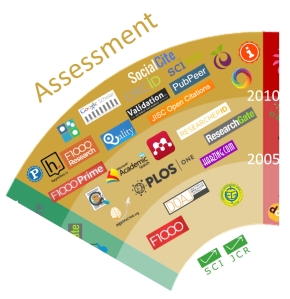In today’s scientific landscape, the number of times a study is
cited makes considerable difference to the significance of the study and
the reputation of authors themselves. The funds and grants given to
researchers are distributed/awarded based on their research profile, and
the success of one’s past research is measured by the quantity and
quality of one’s citations. Therefore, researchers have begun to explore
the most successful strategies for improving
citation metrics.
Recently, there have been conflicting views on whether the length and
content of an abstract affects the number of citations a paper receives.
In the last year itself, two significant papers have quantitatively
explored how an abstract’s length and writing style affects the number
of citations. However, the two papers offered contradictory results. In
this blog, we analyze these studies and explore whether abstracts really
have an impact on how often papers are cited.
Do Unique Words and Descriptions Affect Citations?
In April 2015,
PLoS Computational Biology
published a study authored by a University of Chicago professor who
wanted empirical data to back up the generic writing advice he gave his
graduate students. After having conducted many workshops informing
students to keep their abstracts short, simple, and confident, Dr.
Allesina decided to test the relationship between ten abstract writing
rules and bibliometric realities.
Using one million abstracts from various scientific disciplines, Allesina
et al.
tested the correlation between these rules and citation quantity. Also,
in this study, they examined the length of sentences and types of words
that were used in comparison to other articles in the same journals.
The results of the study were quite surprising, as they demonstrated,
significant correlations between long, redundant, descriptive
abstracts, and high numbers of citations, i.e., abstracts with more
adjectives, adverbs, unusual words, and “pleasant” words resulted in
studies with more subsequent citations. However, larger number of
simple, common words, and matching keywords in abstracts correlated with
lower citation numbers.
Very few rules met the expected patterns; signaling novelty and
importance correlated with strong citation across all disciplines, as
was using superlatives to demonstrate boldness.
Based on the analysis, Dr. Allesina was forced to conclude that the
rules he had taught to scientific writers that told them to be brief and
avoid jargon were in fact harming their chances of a study being cited.
The authors were quick to offer a possible explanation for their
findings, suggesting that the use of electronic databases to search for
research underpinned their results. The more unique words and
description an abstract uses, they argue, the more likely the paper is
to appear in a wider range of database searches, and thus it is more
likely to be cited. However, a short and simple abstract will appear in a
much lower number of keyword searches.
Keeping it Simple
In August 2015, the
Royal Society published a study authored by
Dr. Letchford
of the University of Warwick, UK, which investigated the same question:
how does length of abstract impact citation? Dr. Letchford’s focus was
on the titles of articles and he concluded that short titles drive
higher citations, which is quite obvious; however in 2016, another study
by Dr. Letchford, which was published by the
Journal of Infometrics,
aimed less to explore the applicability of writing advice and more to
analyse the flow of online scientific communication, but his methods
were similar. Using 200,000 of the most highly cited papers from the Web
of Science between 1999 and 2008, Dr. Letchford used word frequency
N-diagrams to correlate language use and length with citation numbers.
The results of this analysis were precisely the opposite of Dr. Allesina’s. Letchford
et al.
found a weak but significant statistical correlation between short
abstracts that re-use simple words and high numbers of citations;
moreover, the shorter the words in the abstract, the lower the chances
of citation. In fact, the addition of just one five-letter word to a
scientific abstract reduced the chances of citation in this study by
0.02%, which although does not seem significant, could have an impact.
The same can be said for Dr. Letchford’s overall conclusion, which
found that doubling the word frequency in an abstract contributed a
0.70% higher chance of citation. The authors offered their own
explanation for this result, suggesting that the rules that Dr.
Allesina’s study appeared to have undermined should in fact be
reiterated. There is a need, said Letchford “for scientists to make
their work understood” through short, simple, and repetitive language.
How Should You Write Abstracts?
So, where does this leave scientific researchers who are currently
writing their papers? Should their abstracts be short or long? Should
they be full of adverbs or simple three-letter words? Should they be
highly indexable or easily read?
Currently, the empirical data is mixed mostly because there are so
many confounding factors in citations such as impact factors, specific
writing conventions, the first language of authors, and journal styles,
all of which affect the writing of an abstract and the subsequent
citations.
Ultimately, the only factor that will truly impact one’s citations is
the quality of the research being published. A ground-breaking study
will be widely cited no matter how long or short the abstract or how
many adjectives are included.




